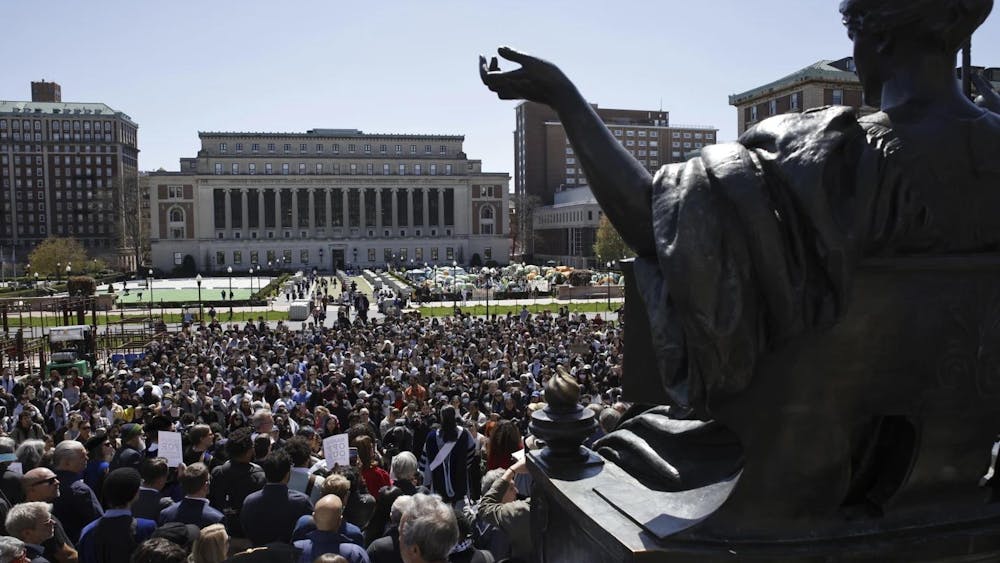In a celebration of the University's Irish character, Notre Dame's Keough-Naughton Institute for Irish Studies sponsored Felix M. Larkin's lecture on the Shemus political cartoons of Ireland in the 1920s. The talk, titled "Artistic Bombs in Ireland: the Shemas Cartoons in the Freeman's Journal, 1920-1924," took place in Flanner Hall on Tuesday afternoon.
After spending several decades as a public servant in Ireland for both the Irish Department of Finance and the National Treasury Management Agency, Larkin is now a freelance historian, focusing on the history of the Freeman's Journal, a prominent Dublin newspaper dating back to the 18th century that published the Shemus cartoons.

In his lecture, Larkin detailed the legacy of the political cartoons produced by the English-born cartoonist Ernest Forbes Holgate, who, under the pseudonym of "Shemus," commented on the strife of the 1920s in Ireland.
"Ernest Forbes Holgate dropped his surname and signed some of his work as Ernest Forbes, with each political work carrying the trademark of 'Shemus,'" Larkin said. "The spelling of Shemus marked it as an unmistakably English rendition of the Irish name 'Seamus.'"
Larkin said the English bearing of Forbes defined much of the content he created, with its hard-hitting criticism of British involvement in this contested period of Irish history. Larkin said this era was marked by the dispute over Irish home rule and the Anglo-Irish Treaty of 1921.
"The cartoons represented a modern style that imitated cartoons found in English journals of the time," Larkin said. "When deprived of their British content and critiques of British politics in Ireland, the cartoons became less subtle."
Larkin said the primary political interest of the cartoons made them an asset to the Freeman's Journal, and because they illuminated the increasingly brutal nature of British rule in Ireland, they often proved incendiary.
"Artistic Bombs - that's how the cartoons were described in the Irish Parliament," Larkin said.

Almost universally, Larkin said the cartoons portrayed politicians in exaggerated caricature, most notably the Irish unionist Sir Edward Carson and British Prime Minister David Lloyd George.
Larkin said the offensive nature of the cartoons made them powerful, such as in one case in which a politician was assassinated two weeks after his likeness appeared in a pejorative Shemus cartoon.
"Press can shape the tone of political discourse. In this case, the tone was particularly nasty, and had dire consequences," Larkin said.
Despite the occasionally inflammatory content portrayed in the Shemus cartoons, Larkin said they are quite valuable for understanding the political landscape of Ireland in the 1920s. He quoted the response of the Freeman's Journal, which said the cartoons possessed "high political value that we think is properly appreciated by readers of this journal and will not easily fade from public memory."
Larkin closed by returning to a quotation with which he began his talk, from The Guardian cartoonist Steve Bell.
"Cartoons can say things that are less easy to say in a more straightforward, journalistic context," he said.












